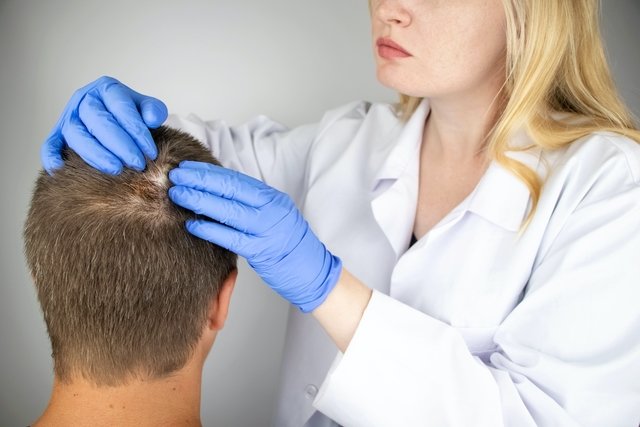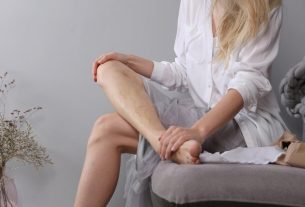Scalp mycosis is a skin infection caused by fungi, which can cause intense itching, the presence of dandruff or yellow crusts on the head, as well as hair loss in some regions of the scalp, for example.
This type of mycosis, also known as Tinea capitis or tinea capitis, is mainly caused by fungi of the genus Trichophyton or Microsporum, which can be found in the outer layers of the skin of the scalp and the hair shaft, and can be easily transmitted from person to person. person, through direct contact or sharing combs, towels or hats.
The treatment of mycosis on the scalp must be recommended by a dermatologist, who normally recommends the use of shampoos or antifungal tablets, and it is important that the treatment is carried out in accordance with medical advice to prevent the fungus from growing again and causing symptoms again. .

Main symptoms
The main symptoms of scalp ringworm are:
- Intense itching in the head;
- Rounded plaques or spots on the scalp;
- Mild pain or redness in the area;
- Local peeling;
- Presence of dandruff;
- Black dots on the scalp;
- Areas with hair loss or broken strands;
- Yellow crusts on the hair;
- Pain or increased sensitivity in the scalp.
Although rare, in addition to these symptoms, some people may also experience sore neck pain, due to the immune system’s response to combat the infection caused by fungi.
Furthermore, in some cases, inflammation of the scalp skin caused by Tinea capitis can lead to the appearance of swelling, formation of blisters and pus in the affected region, this situation being known as kerion, and can lead to permanent hair loss. Know how to identify all the symptoms of Tinea capitis.
How the diagnosis is made
The diagnosis of scalp ringworm is made by evaluating the symptoms presented by the person and analyzing the affected regions of the scalp. To confirm the diagnosis and the fungus responsible, the doctor can scrape the lesion, which consists of removing some skin cells, in addition to collecting a hair sample, and analyzing them under a microscope with the aim of identifying the fungus and, thus, start the most appropriate treatment.
Possible causes
Scalp ringworm is caused by fungi of the genus Trichophyton or Microsporum that attack and grow the outer layer of skin on the scalp and hair shaft.
These fungi can be transmitted through direct contact with the hair of an infected person or by sharing objects that are used on the hair, such as combs, towels, elastics, hats or pillowcases, for example.
Generally, this type of ringworm is more common in children, as they are more likely to touch their heads and share objects that are in contact with their hair, such as headbands, elastics and hats.
How the treatment is carried out
Treatment for scalp ringworm is carried out by a dermatologist with the aim of eliminating the fungus that causes the ringworm. The main treatments for scalp ringworm include:
1. Antifungal remedies
Some of the most commonly used oral antifungals recommended by dermatologists include griseofulvin and terbinafine, which should be taken for approximately 4 to 8 weeks, even if symptoms have already improved.
If a person has kerion, the doctor may also recommend the use of corticosteroids in the form of tablets, to help reduce inflammation in the scalp skin and reduce the risk of permanent hair loss. These corticosteroids can be used for a short period of time together with oral antifungals.
2. Antifungal shampoos
In addition to oral remedies, the doctor may also advise that hair hygiene should be carried out with an antifungal shampoo, which contains ketoconazole or selenium sulfide, to remove the fungus and prevent the transmission of mycosis to other people or to other areas of the body. scalp.
Shampoos help to quickly alleviate symptoms, but do not completely prevent fungus from developing. Therefore, it is always recommended to use shampoos together with oral antifungal remedies prescribed by the dermatologist.
Bibliography
- AUCHUS, IC; et al. Tinea capitis in adults. Dermatol Online J. 22. 3; 13030/qt4dm9s3fh, 2016
- JOHN, AM; et al. The kerion: an angry tinea capitis. Int J Dermatol. 57. 1; 3-9, 2018
- AL ABOUD, A. M.; CRANE, J. S.IN: STATPEARLS (INTERNET). TREASURE ISLAND (FL): STATPEARLS PUBLISHING. Ringworm of the head. 2021. Available at: <https://www.ncbi.nlm.nih.gov/books/NBK536909/>. Accessed on October 12, 2021
- HAY, R.J. Scabies: Current Status. Mycopathologia. 182. 1-2; 87-93, 2017
- GUPTA, AK; et al. Tinea capitis in children: a systematic review of management. J Eur Acad Dermatol Venereol. 32. 12; 2264-2274, 2018

Sign up for our newsletter and stay up to date with exclusive news
that can transform your routine!
Warning: Undefined array key "title" in /home/storelat/public_html/wp-content/plugins/link-whisper-premium/templates/frontend/related-posts.php on line 12
Warning: Undefined array key "title_tag" in /home/storelat/public_html/wp-content/plugins/link-whisper-premium/templates/frontend/related-posts.php on line 13




